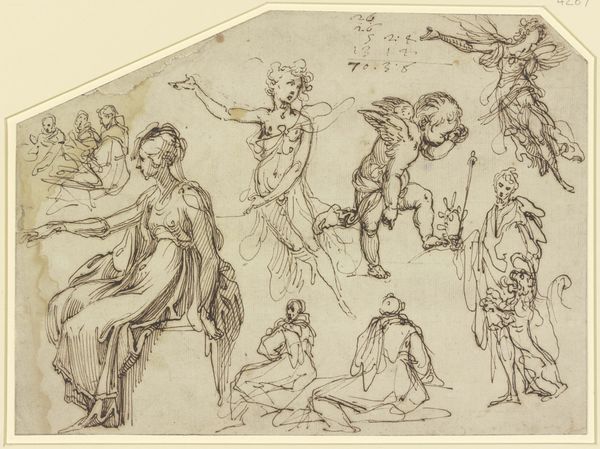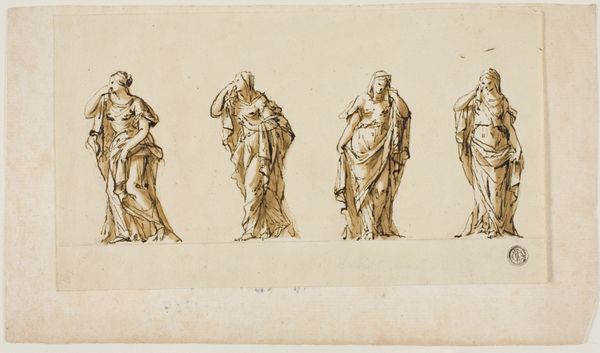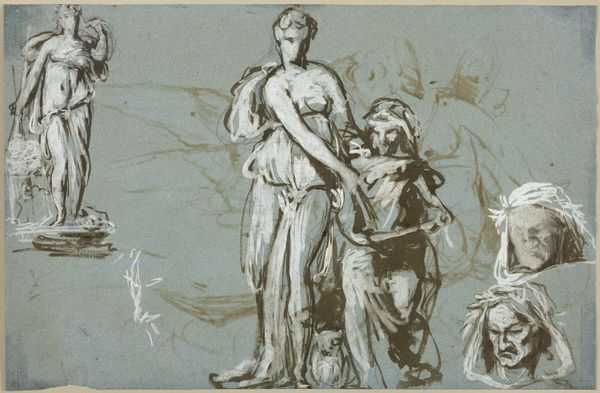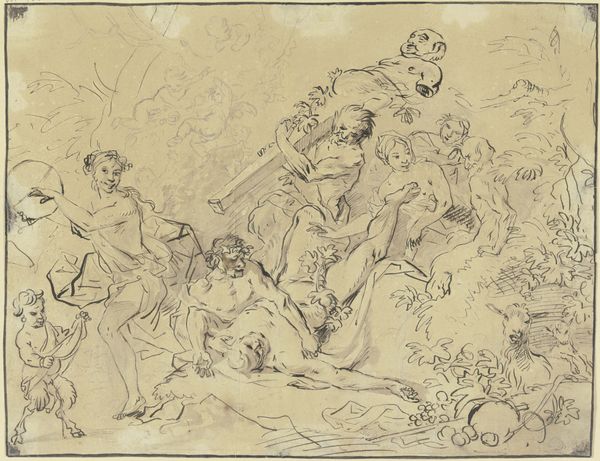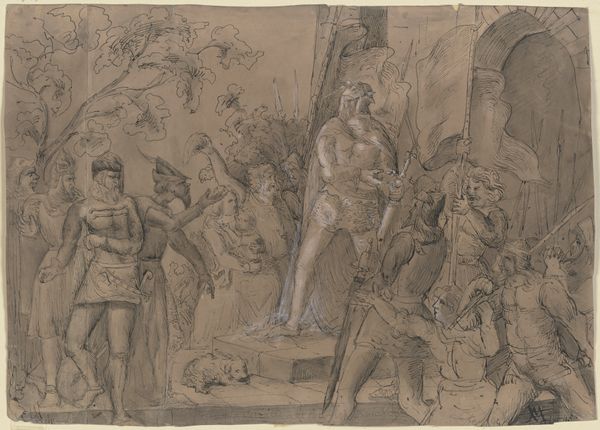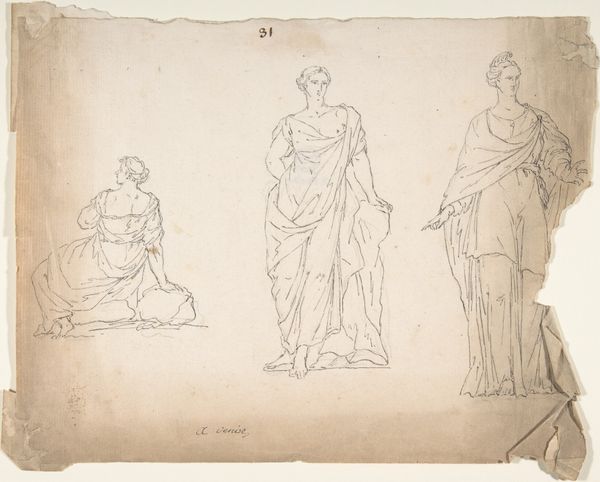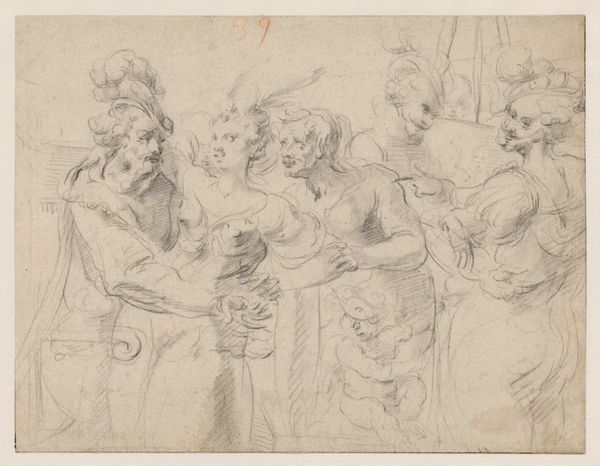
drawing, gouache, pencil
#
portrait
#
drawing
#
baroque
#
gouache
#
figuration
#
pencil
#
15_18th-century
#
history-painting
Copyright: Public Domain
Curator: This drawing, attributed to Gaspare Diziani, currently residing here at the Städel Museum, presents "Venus, Merkur und Minerva (Scheinskulptur)". We're looking at what seems to be a preparatory sketch in pencil and gouache depicting these three Roman deities. Editor: There's a rather stark feel to it, a monochromatic echo. The dynamism in the sketch suggests not still figures, but arrested motion, captured between chisel strikes perhaps? The light, airy hatching gives form to these Gods, Venus, Mercury, and Minerva. Curator: Precisely! The artist's handling of light and shadow through these materials helps to define the faux sculptural forms. But what truly intrigues me is the implication of artistic labor within the baroque social context of the time. Sketches like these would've been instrumental in realizing grander commissions for wealthy patrons, a demonstration of artistic skill ready to be purchased and translated to a permanent work of art. Editor: I'm drawn to the symbolic weight, as well as the surface tension achieved through the pencil and wash. Minerva, armed and regal, stands in sharp contrast to the comparatively nude Venus, attended by a putto, with Mercury adopting a central, mediating stance. There is certainly dynamism achieved with that sharp pencil in depicting those classical figures! Curator: And consider the marketplace—the artistic economy. Diziani was, like many of his peers, producing drawings both for preparatory work but also for sale as independent works to a growing class of collectors. What was deemed worthy for "high art" wasn’t intrinsic but relational; connected to the cost of materials and labour. Gouache or watercolor served a different function than, say, marble or bronze. Editor: While it hints at the labour involved in the wider baroque culture of production, for me the magic here remains how he captures form and narrative. The visual language established by his drawing generates powerful meaning irrespective of the socio-economic conditions. Curator: Yes, together the artistic execution, the visual narrative, and the wider production methods help illuminate the place of this work inside 18th-century European workshops and market dynamics. Editor: Absolutely, by acknowledging those historical contingencies along with its own artistic strengths, this study presents itself as both an aesthetic treasure and a vital artefact.
Comments
No comments
Be the first to comment and join the conversation on the ultimate creative platform.
